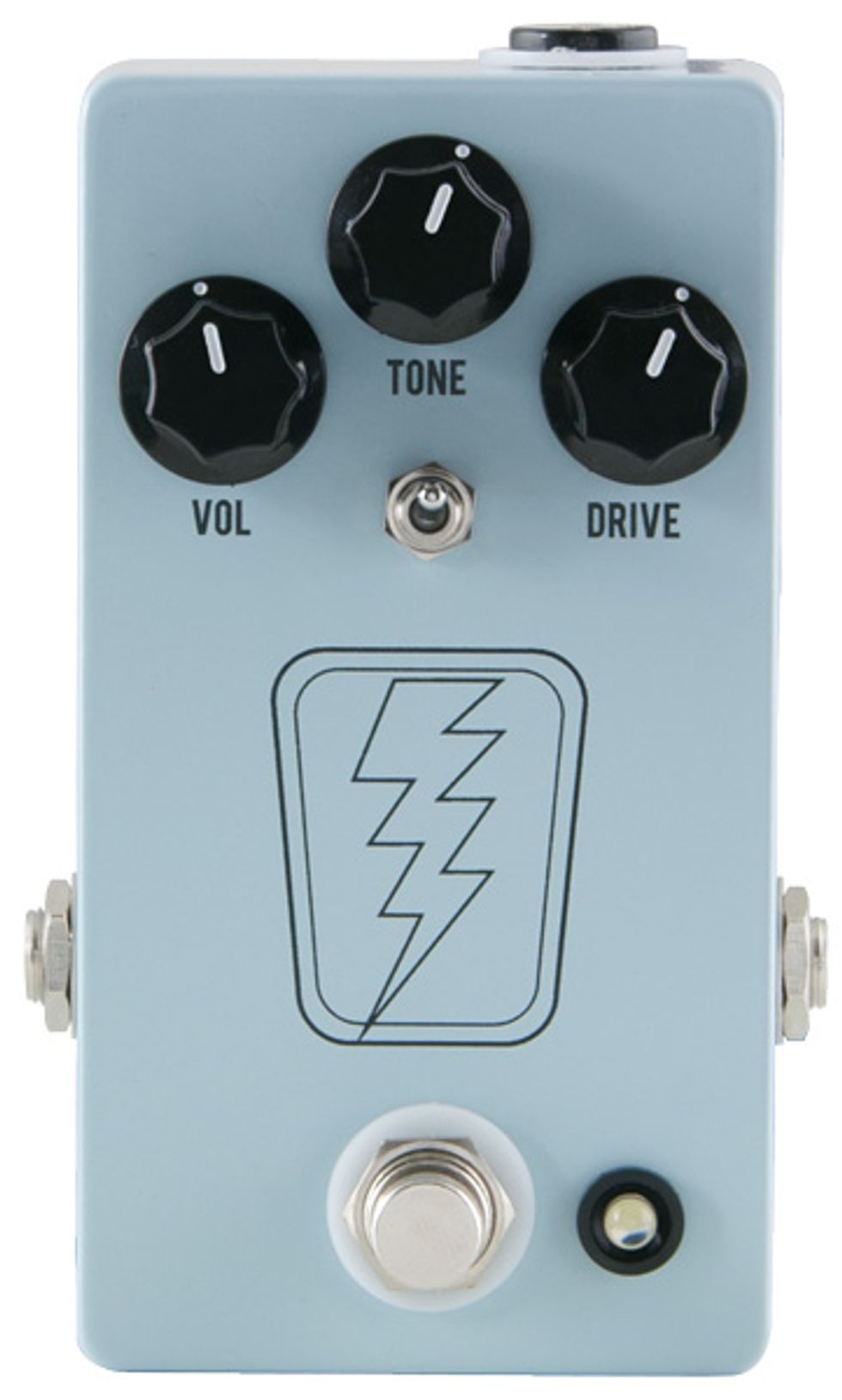Coming of age in the ’70’s, I was raised on Led Zeppelin. I often imagined a studio filled with Jimmy Page’s giant Marshalls and Oranges, with dozens of microphones arranged at various angles. Surely that’s how the Gods achieved such massive sounds! So imagine my surprise when I learned that much the Zeppelin sound was created with low-wattage, department store amps.
The SuperBolt is JHS Pedals’ attempt to deliver that exploding-little-amp sound in a stompbox. The all-analog pedal is based on the sound of the Supro S6420 Thunderbolt allegedly used on early Zeppelin records, and it manages to replicate the sounds of the Silvertone, Supro, Harmony, and Oahu amps Valco built in the early ’60s.
Stomp on a Supro
The “Supro-in-stomp” idea isn’t new—other companies have explored similar circuits. Still, JHS should be applauded for bringing something other than another TS-9 variation to the masses. The layout is simple: The drive knob works like a Valco’s volume knob—the higher the setting, the more break up. The pedal’s volume knob is a master level control, which Valco amps don’t have or need, though it’s a handy feature here. Just dial in the drive, set the output volume, and you’re off.
The wide-ranging tone knob takes you from dark and mellow to—let’s face it—what you probably want from a pedal like this: the sound of a vintage budget amp jacked to within an inch of its life. Yet the SuperBolt isn’t a one-trick pony, and its other tone options are worth exploring.
There’s also a high/low mini-switch, which replicates the dual inputs on some of those old amps. The fact that the down position is “high” may be counter-intuitive, but it’s easy to sort once you start playing. I view the settings as two useful sonic options, one grittier than the other.
Ratings
Pros:
An alternative to the same old overdrives. Classic-sounding, but not so retro that you can’t tread new ground.
Cons:
A bit pricey.
Tones:
Playability/Ease of Use:
Build/Design:
Value:
Street:
Street $199
JHS Pedals, SuperBolt
jhspedals.com
Heavy as Lead
I grabbed a Telecaster Standard and a Carr Sportsman, turned up to the threshold of distortion, and clicked on the SuperBolt, dialing in the best “Olympic Studios ca. 1968” sound I could muster. I loved how chords sounded: super-crispy, but not fried. Intervals and partial chords were lively too, as ringing strings and harmonics clanged against each other. The sound inspired new riffs—everything I played made me think, “Man, I should remember that one!”
Single-note playing was less impressive in terms of sustain, so I gravitated toward staccato phrases. While this might dissuade some from choosing the SuperBolt as their sole overdrive, I liked the way it took me out of my comfort zone, forcing me to think and play differently. Plus, what you get in trade for less sustain is a surprisingly open and uncompressed sound.
I also tried the SuperBolt with a Fender Musicmaster Bass amp. Pairing a low-wattage tube amp with a pedal designed to replicate one might seem like gilding the lily, but the combination was fantastic. Recording into ProTools using a Sennheiser 421 and a Neve preamp clone got me those Zep sounds, as well as classic Kinks chords and ZZ Top boogie tones.
The Verdict
The SuperBolt can generate huge sounds in the studio. Ironically, it can make your $3,000 boutique amp sound like the Christmas present your cool grandma bought from Montgomery Ward back in 1964. But when it comes to recording, it’s the ends, not the means, and on that count, the SuperBolt delivers the goods.












![Rig Rundown: Russian Circles’ Mike Sullivan [2025]](https://www.premierguitar.com/media-library/youtube.jpg?id=62303631&width=1245&height=700&quality=70&coordinates=0%2C0%2C0%2C0)






